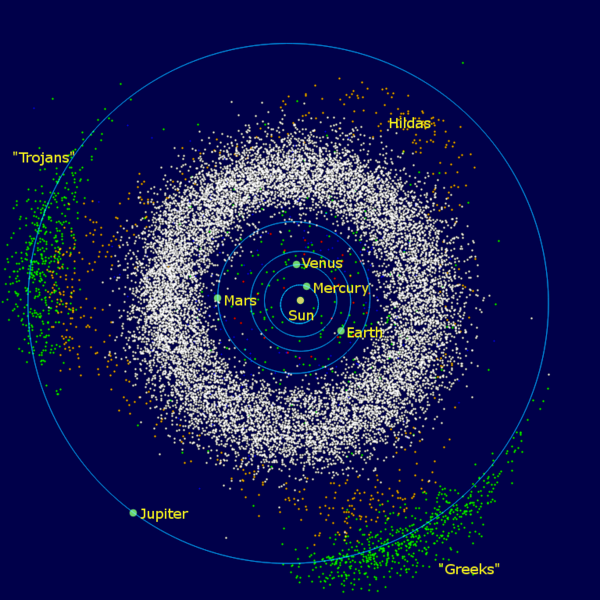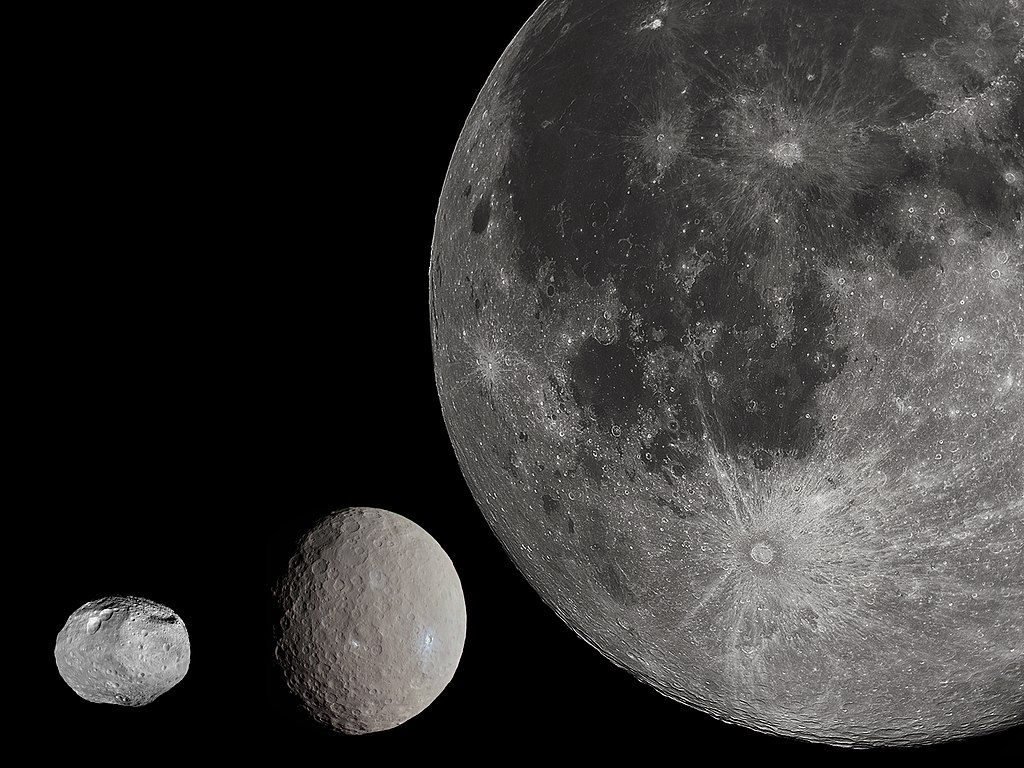Asteroids, also called minor planets or planetoids, are a class of astronomical objects. The term asteroid is generally used to indicate a diverse group of small celestial bodies in the solar system that orbit around the Sun. “Asteroid”, Greek for “star-like”, is the most commonly used word in the English literature for minor planets, which is the term preferred by the International Astronomical Union, while other languages prefer planetoid, Greek for “planet-like”, because it more or less describes what they are. In late August 2006, the IAU introduced a new class “small solar system bodies” (SSSB), to include most objects thus far classified as minor planets and comets. At the same time, the term “dwarf planet” was created for classifying the largest of the minor planets.
The first asteroid to be discovered, Ceres, is the largest asteroid known to date and is now classified as a dwarf planet. All others are currently classified as small solar system bodies. The vast majority of asteroids are found within the main asteroid belt, with elliptical orbits between those of Mars and Jupiter. It is thought that these asteroids are remnants of the protoplanetary disc, and in this region the accretion of planetesimals into a larger planet or planets during the formative period of the solar system was prevented by large gravitational perturbations by Jupiter. Some asteroids have moons or are found in co-orbiting pairs known as binary systems.

A diagram showing the asteroid belt relative to the inner planets.
Hundreds of thousands of asteroids have been discovered within the solar system at the present rate of discovery around 5,000 per month. Of the more that 400,000 registered minor planets, 178,283 have orbits known well enough to be assigned permanent official numbers. Of these, 14,366 have official names. The lowest-numbered, unnamed minor planet is (3708) 1974 FV1; the highest-numbered named minor planet is 164215 Doloreshill. Current estimates put the total number of asteroids above 1 km in diameter in the solar system to be between 1.1 and 1.9 million. The largest asteroid in the inner solar system is 1 Ceres, with diameters of 975 × 909 km. Two other large inner solar system belt asteroids are 2 Pallas and 4 Vesta; both have diameters of ~500 km. Vesta is the only main belt asteroid that is sometimes visible to the naked eye (on some very rare occasions, a near-Earth asteroid may briefly become visible without technical aid).
The mass of all the asteroids of the Main Belt is estimated to be about 3.0-3.6 × 1021 kg, or about 4 percent of the mass of the Moon. Of this, Ceres comprises 0.95 × 1021 kg, some 32 percent of the total. Adding in the next three most massive asteroids, 4 Vesta (9%), 2 Pallas (7%), and 10 Hygiea (3%), brings this figure up to 51%; while the three after that, 511 Davida (1.2%), 704 Interamnia (1.0%), and 3 Juno (0.9%), only add another 3% to the total mass. The number of asteroids then increases rapidly as their individual masses decrease.

Comparison of sizes, from left to right: the asteroid Vesta, the dwarf planet Ceres, and the Earth’s Moon. (Source, CC-BY-SA-3.0)
Asteroids are commonly classified according to two criteria: the characteristics of their orbits, and features of their reflectance spectrum.
Many asteroids have been placed in groups and families based on their orbital characteristics. It is customary to name a group of asteroids after the first member of that group to be discovered. Groups are relatively loose dynamical associations, whereas families are much “tighter” and result from the catastrophic break-up of a large parent asteroid sometime in the past.
In 1975, an asteroid taxonomic system based on colour, albedo, and spectral shape was developed by Clark R. Chapman, David Morrison, and Ben Zellner. These properties are thought to correspond to the composition of the asteroid’s surface material. Originally, they classified only three types of asteroids, based on meteoroid types:
- C-type asteroids: carbonaceous, 75% of known asteroids
- S-type asteroids: silicaceous, 17% of known asteroids
- M-type asteroids: metallic, 8% of known asteroids
This list has since been expanded to include a number of other asteroid types. The number of types continues to grow as more asteroids are studied.
Note that the proportion of known asteroids falling into the various spectral types does not necessarily reflect the proportion of all asteroids that are of that type; some types are easier to detect than others, biasing the totals.
Source of the article: Asteroids – Wikipedia, published under the terms of the GNU Free Documentation License, Version 1.2.
